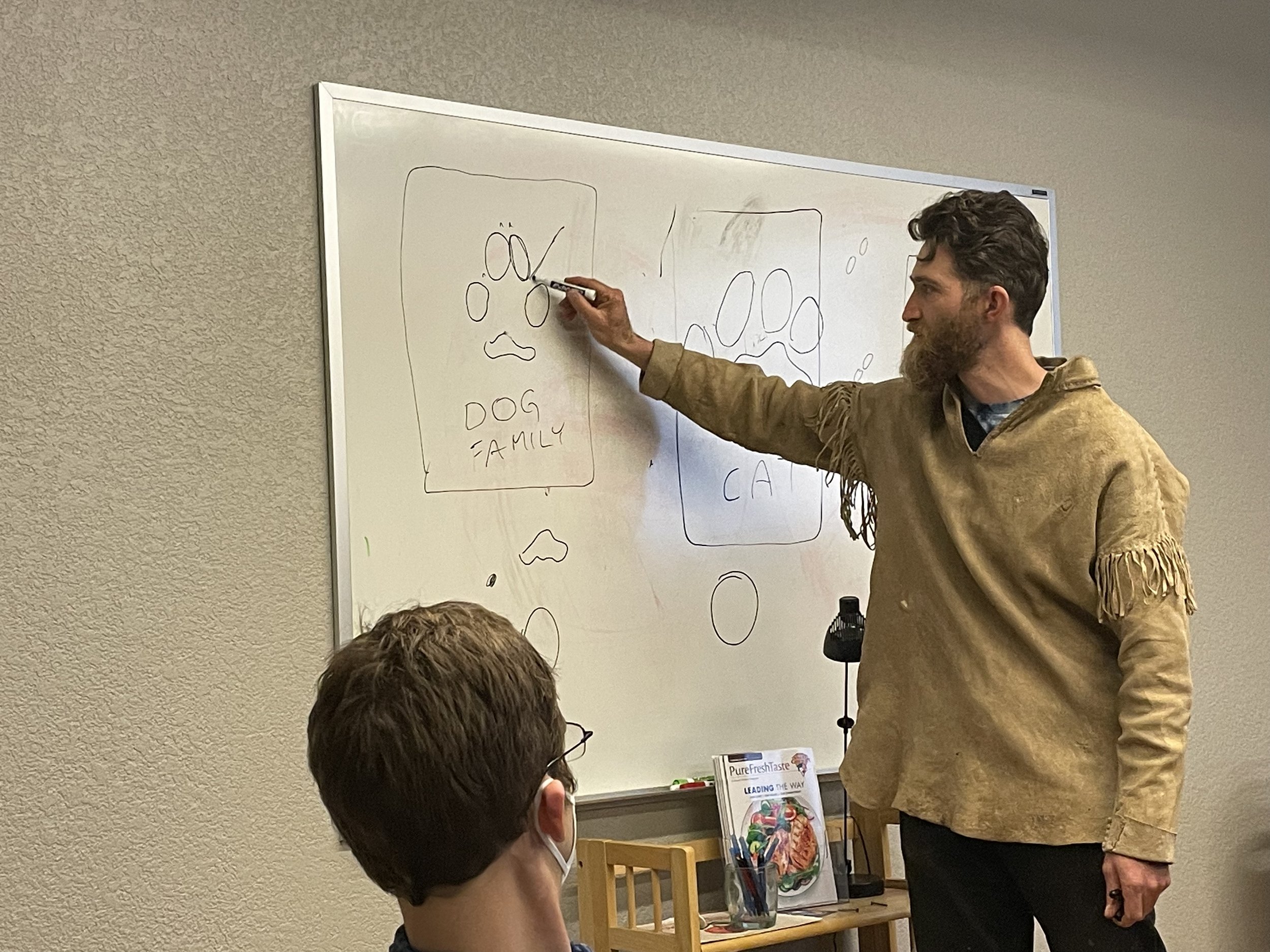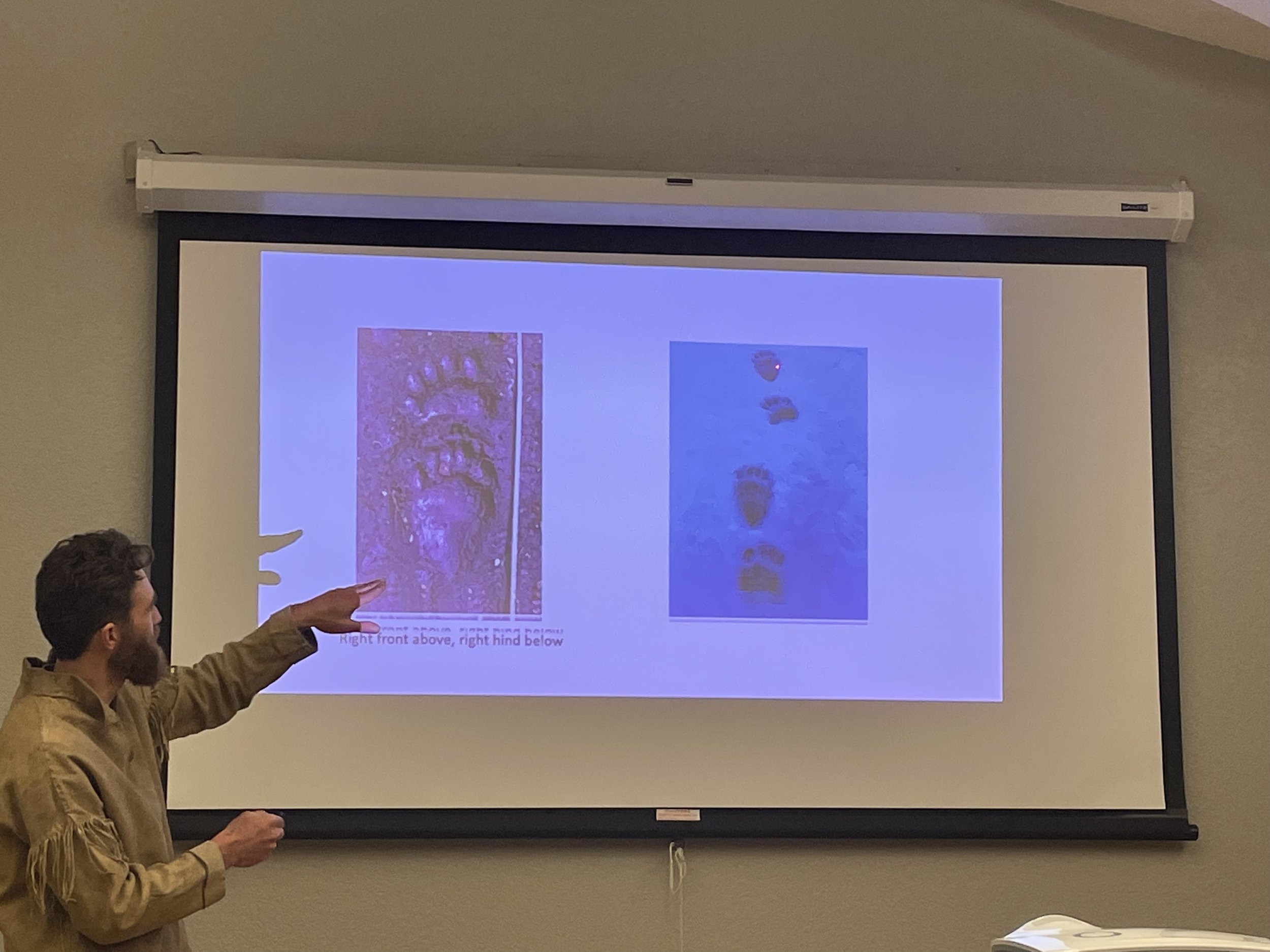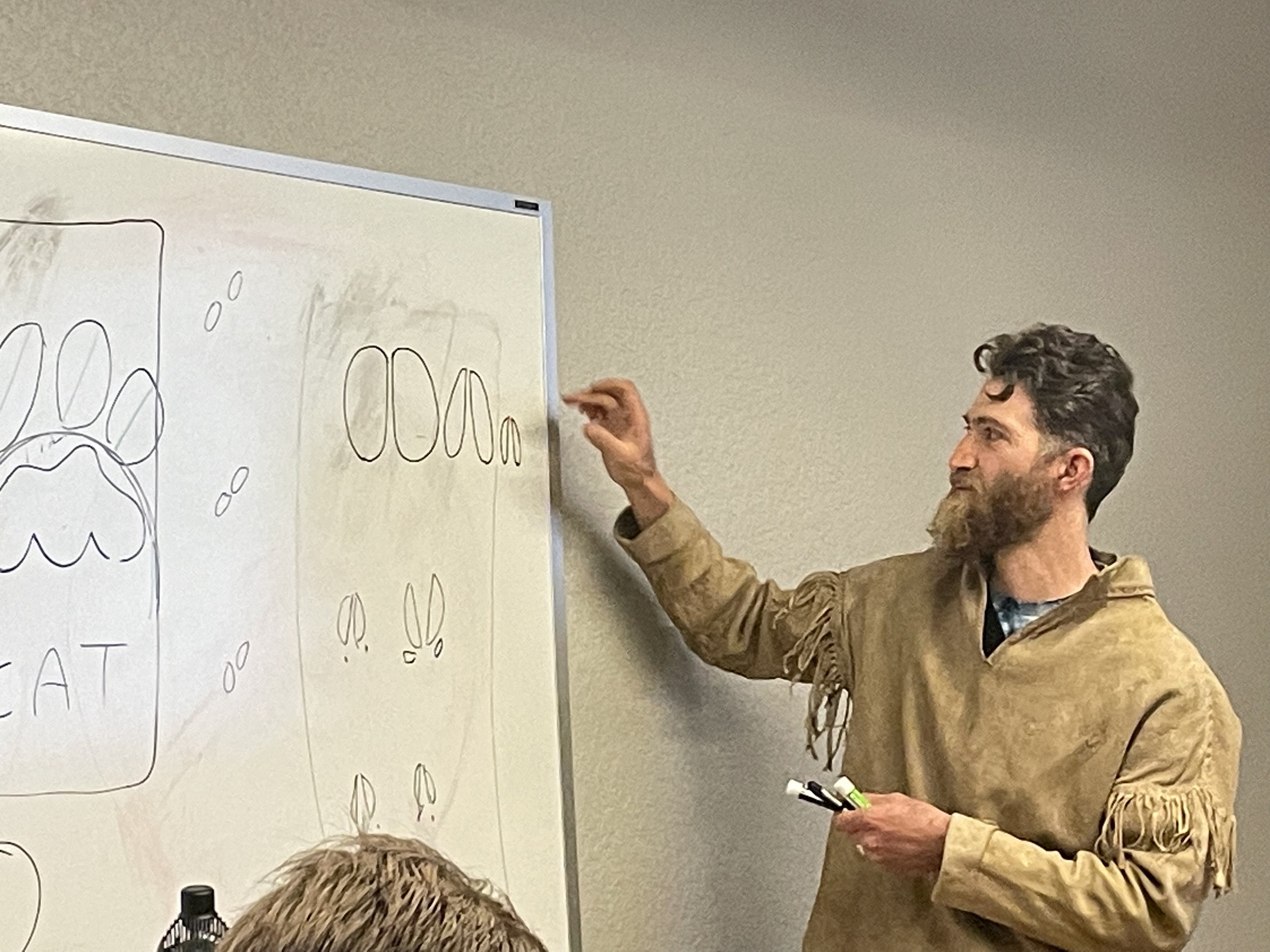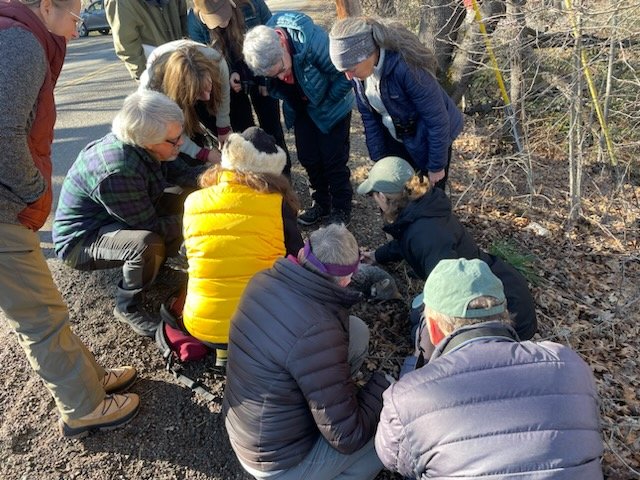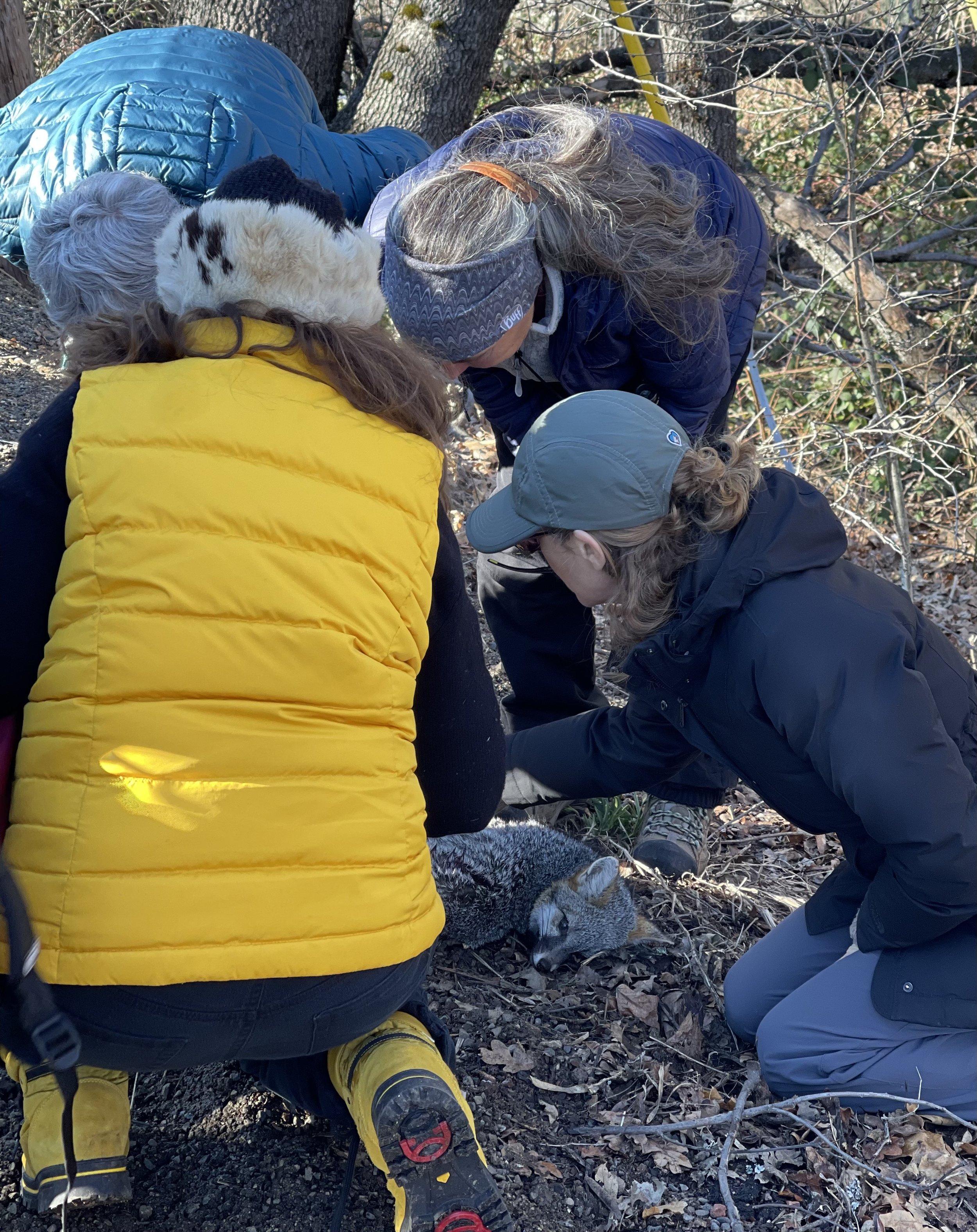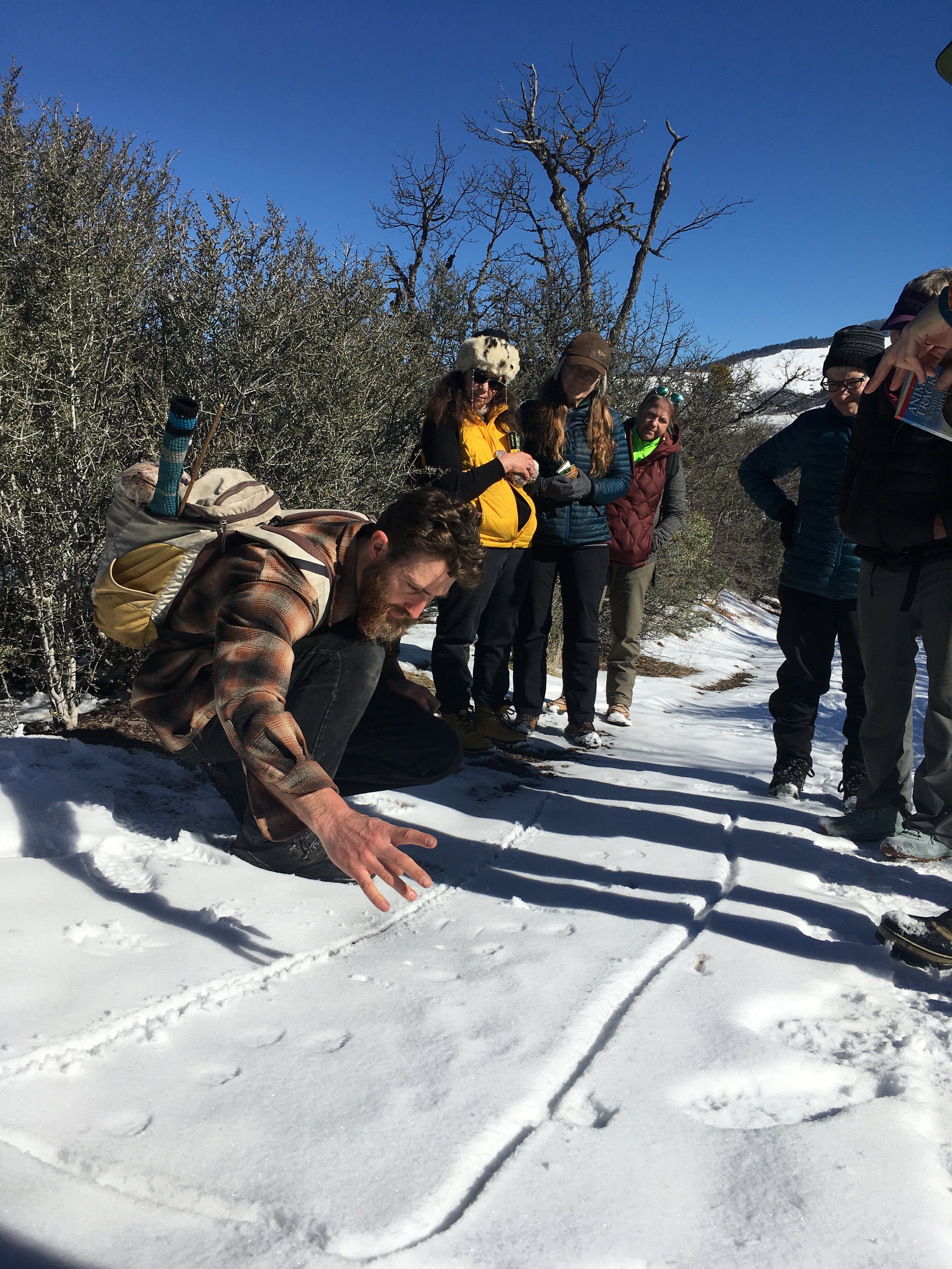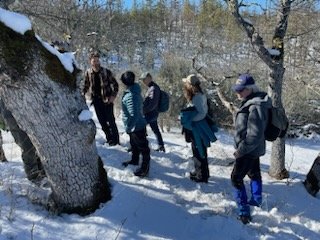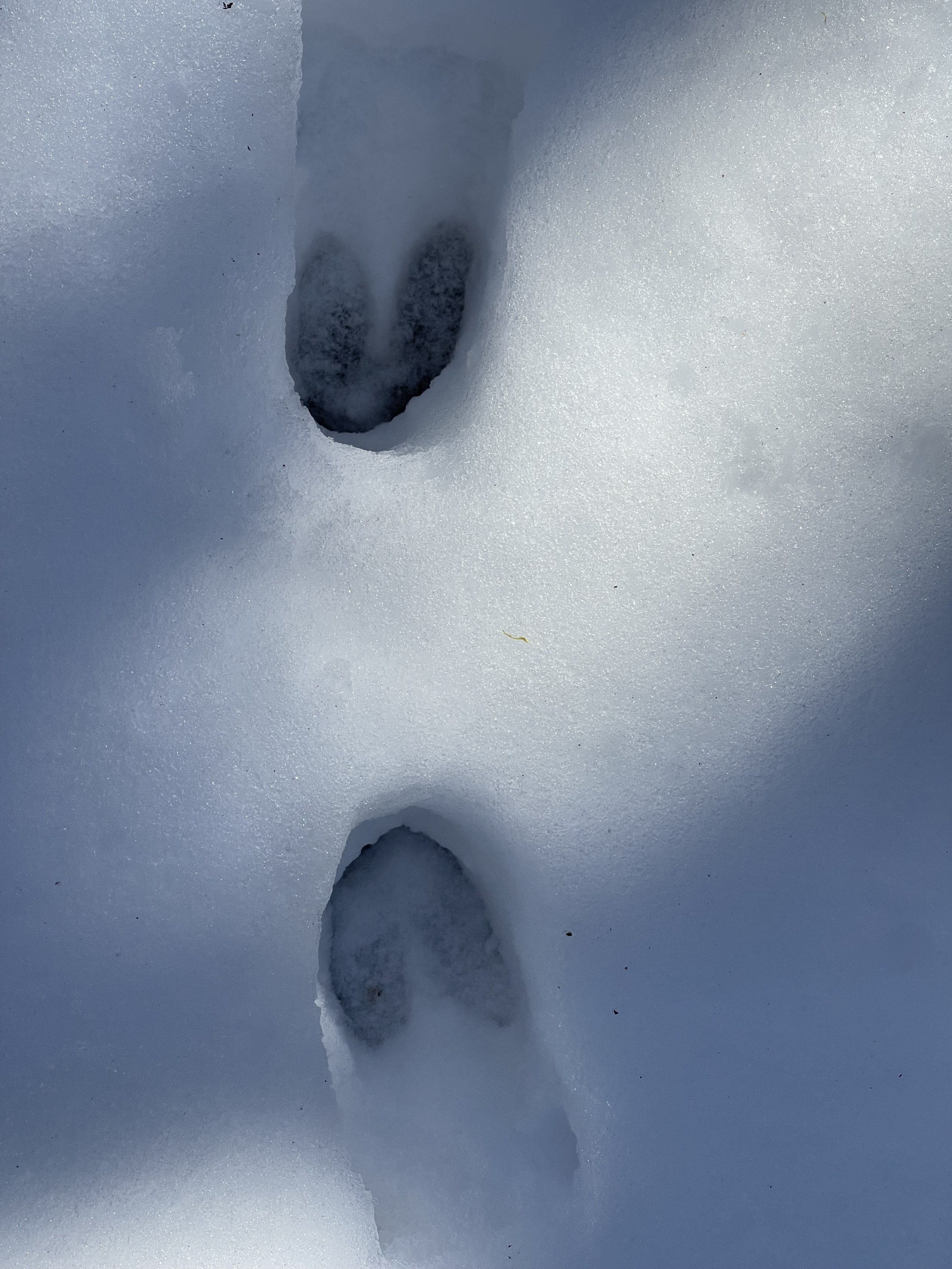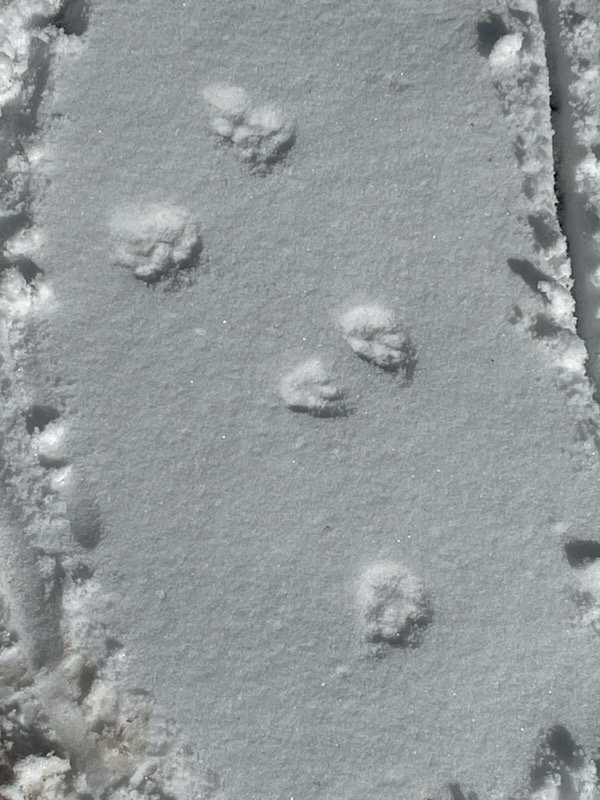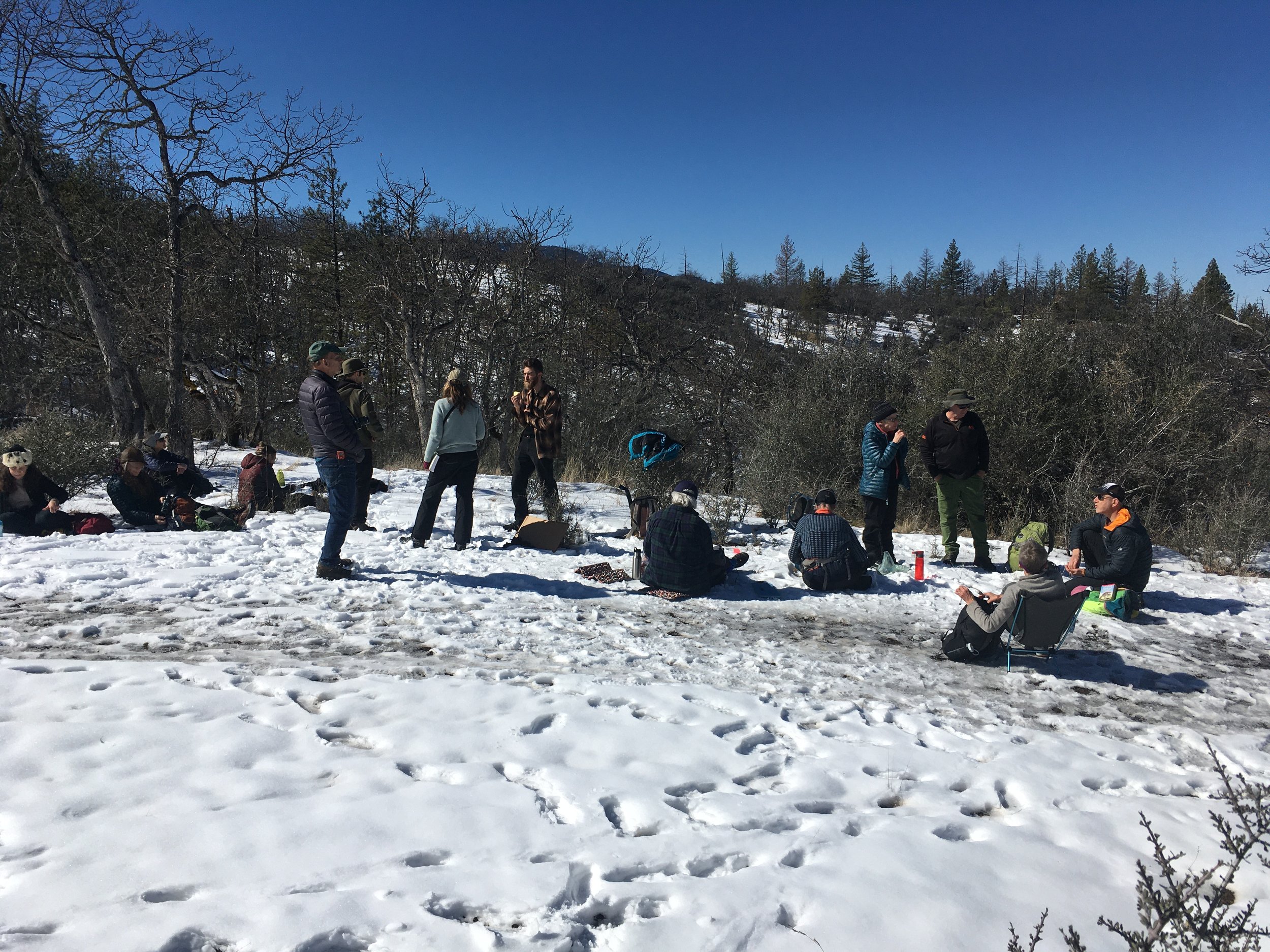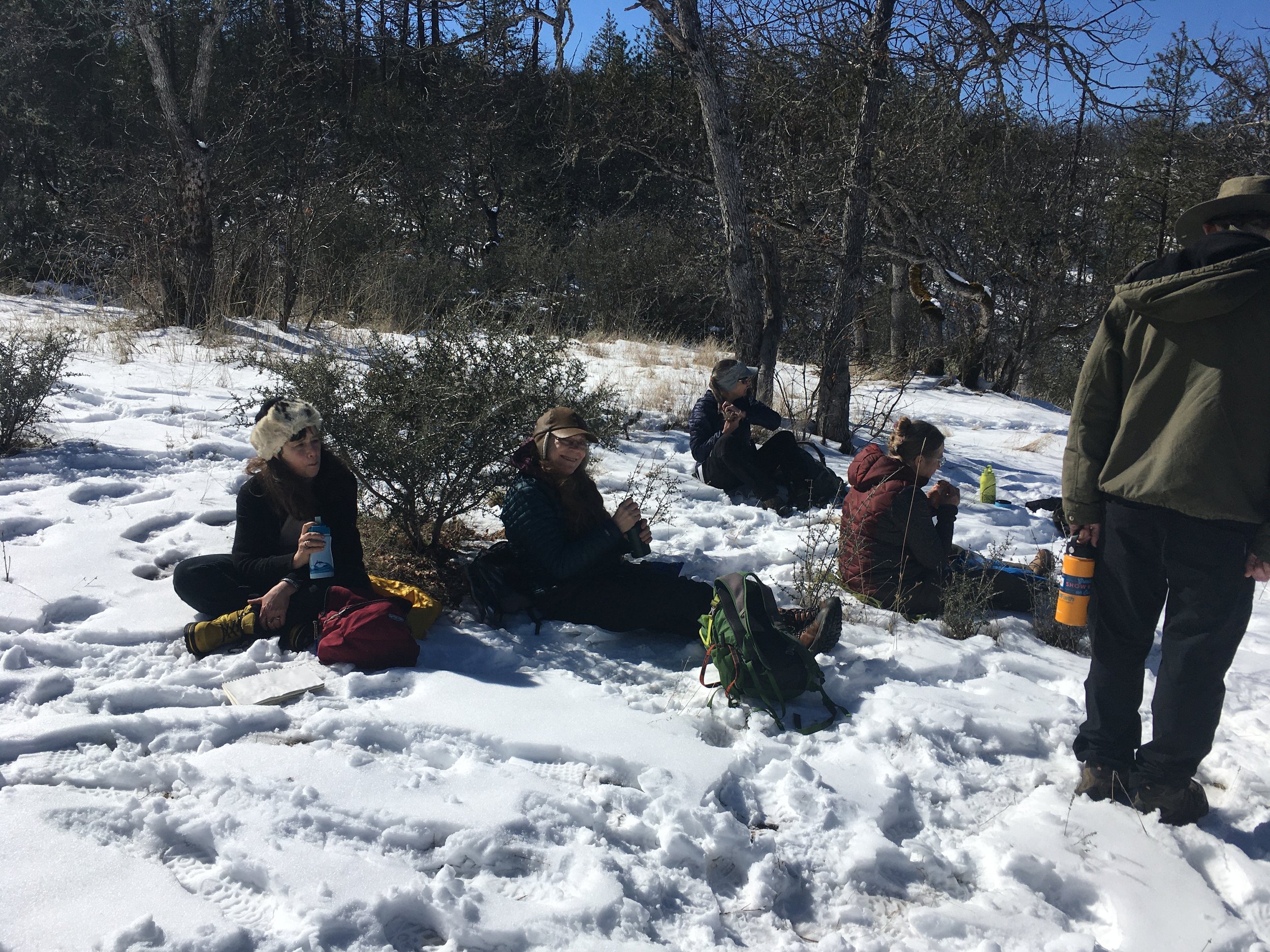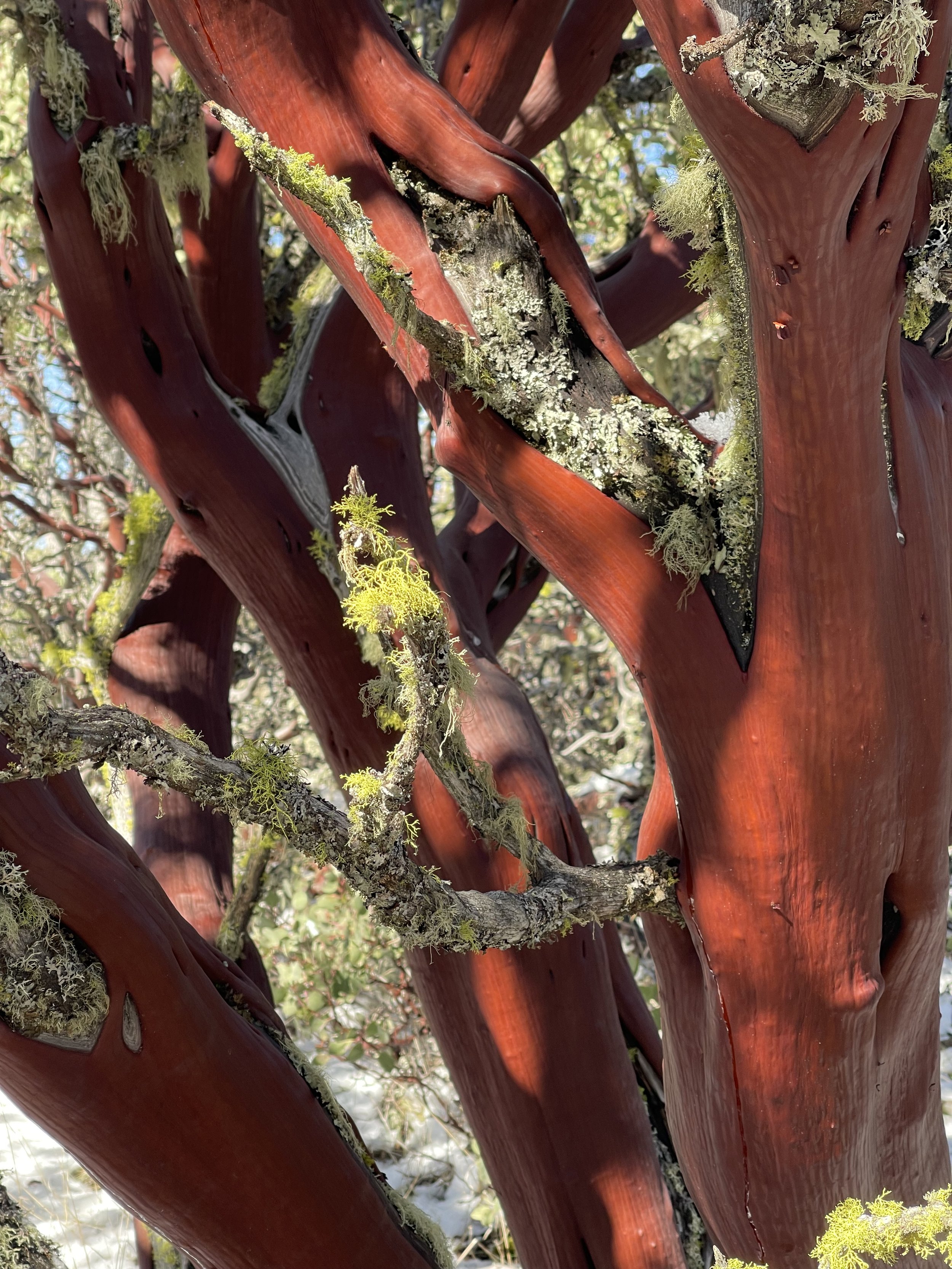February 24 & 25, 2023 - Hike and Learn
We had a full house for our Friday evening lecture despite snowy weather that prevented some from venturing down the mountain. Our leaders, Collette Streight and Robin Bliss-Wagner, kicked off the lecture by explaining that tracking, typically thought of as identifying an animal by looking at prints it left on the ground, is much more than that. We learned that tracking, when done in a holistic way, is about connecting with wild animals, building relationships with them, and understanding the world through their points of view.
Collette and Robin taught us that every animal makes a unique signature on the landscape. A signature is the collection of signs an animal makes when going about its daily life. Examples include tracks, scat, chews, scrapes, lodges, burrows, nests, hair, and feathers. We then learned the six main questions to ask ourselves when we encounter a track or sign to ignite our curiosity and lead us deeper into the animal’s world:
WHO made the track or sign? Was it a male or female? How old was he/she?
WHAT was she/he doing? Stalking, walking, trotting, galloping, leaping, stopping, sitting, turning his/her head?
WHEN was the track or sign made?
WHY was the animal doing what it was doing at that time and place?
WHERE did the animal go? Where is he/she now?
HOW did the animal feel when it made the track or sign? In other words, if this was me, how would I have felt?
Then we explored in detail the first question of tracking – who. We looked at photos, drawings, and field guides to learn about the individual prints and track patterns of many different animals who call the Monument home.
On Saturday, 15 of us carpooled up to the Buck Rock Tunnel trailhead in the glorious sunshine. On the way there, we stopped to examine a gray fox, who unfortunately had been killed by a car the previous night. We noticed its size, color pattern, shape, and then looked closely at the bottom of its feet and its claws before we continued on our way.
Equipped with field guides, tape measures, notebooks and pens, we explored the wildlife tracks and sign we saw in the snow in the parking lot, on the fire road, down in the ravines, up on the ridges, and in and around trees. We followed mule deer and brush rabbit trails to see where they would lead us. We asked questions, awakened our senses, listened to stories, played a game, and even spent some time pretending to be animals.
All and all, it was a beautiful, fun, and inspiring day during which we learned tools that we can use from now on to connect with and learn about the wild critters who live in the Monument and all around us.
